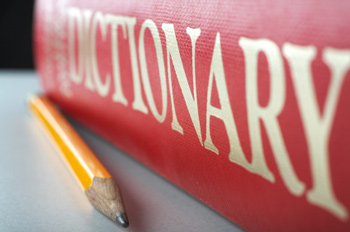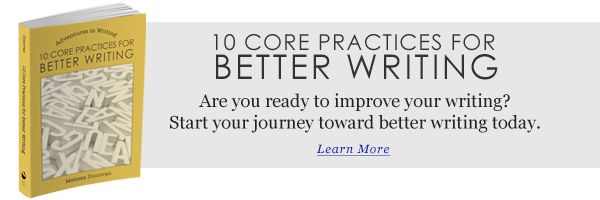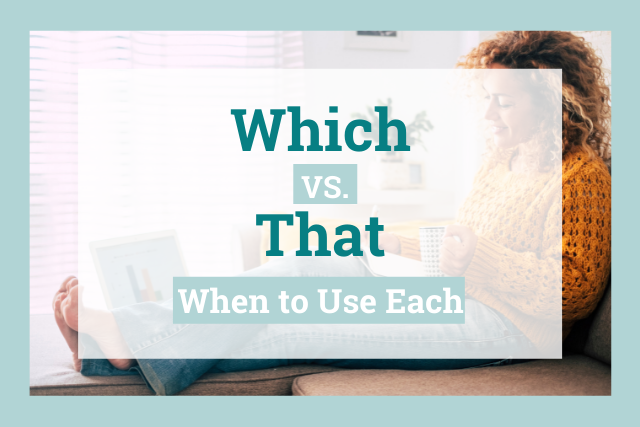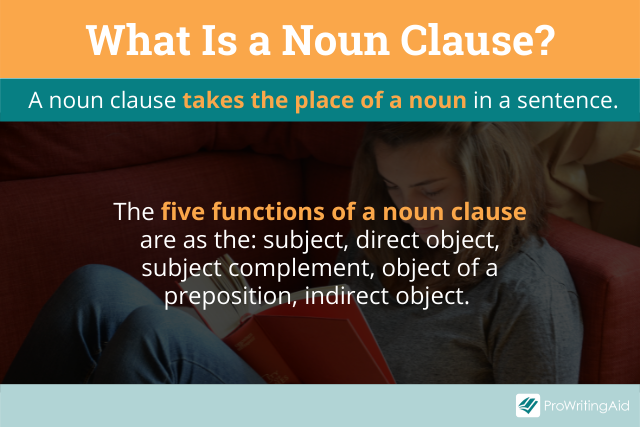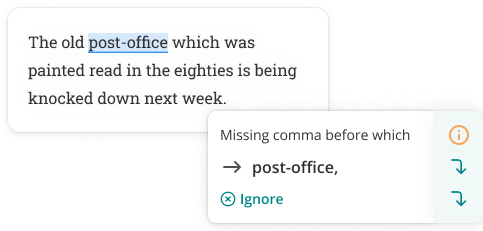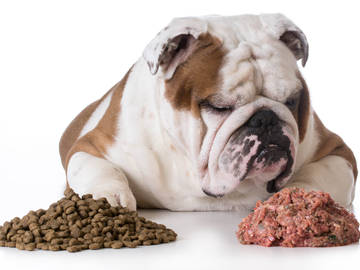Get the grammar rules for using that and which.
There’s a lot of confusion about that and which. These two words are often used interchangeably, even though they’re not necessarily interchangeable.
Historically, that and which may have carried the same meaning, and some English dialects may allow for that and which to be swapped without affecting the meaning of a sentence.
However, in American English, the grammar rules offer a distinct difference between the two words. By the time you’re done reading this post, you’ll fully understand the difference between that and which, and you’ll be able to use both words correctly.
That and Which
As with most grammar rules, there are exceptions and exemptions from the standard ways that and which should be used in a sentence. To gain understanding of confusing word pairs, it’s always best to start with the basics. As we look at how to properly use that and which, we’ll focus on simple, standard usage.
That and which can be categorized into several different parts of speech. Both words can function as adjectives and pronouns. Additionally, that can serve as a conjunction and as an adverb. Today, we’re looking at how that and which should be used when they are working as relative pronouns.
Relative Pronouns
From Wikipedia: “A relative pronoun is a pronoun that marks a relative clause within a larger sentence. It is called a relative pronoun because it relates to the word that it modifies.”
Like adjectives and adverbs, relative pronouns modify other words. Adjectives modify nouns:
- I have a car.
- I have a red car.
Adverbs modify verbs:
- I am walking.
- I am walking quickly.
The main difference between adjectives and adverbs is that adjectives usually modify things (nouns) while adverbs modify actions (verbs). Relative pronouns also modify words, but they often do so as clauses rather than as single, descriptive words. In the examples below, the clauses are italicized.
- Bring me the bucket.
- Bring me the bucket that has apples in it.
- The bucket, which has apples in it, is blue.
The difference between the words that and which and how they are used as relative pronouns depends on whether the clause they belong to is restrictive or nonrestrictive.
Restrictive and Nonrestrictive Clauses
Restrictive Clauses Are Necessary
A restrictive clause is necessary to the meaning of a sentence. For example:
- I want the bucket that has apples in it.
If you removed the clause “that has apples in it,” the meaning of the sentence would be lost. Nobody would know which bucket the speaker wants. The clause is necessary to the meaning of the sentence and is therefore a restrictive clause. Because it’s a restrictive clause, it should take the relative pronoun that.
Nonrestrictive Clauses are Unnecessary
A nonrestrictive clause is not necessary to the meaning of a sentence. In fact, it can be removed from a sentence without affecting its meaning. For example:
- The bucket, which is blue, has apples in it.
- There are apples in the bucket, which is blue.
If you removed the nonrestrictive clause “which is blue,” from either of the sentences above, the meaning of the sentences would not be lost. We’d still know that the bucket has apples in it. Note that in the second example, the nonrestrictive clause adds information about something that has already been identified. Because the clause is unnecessary to the meaning of the sentence, we know it’s a nonrestrictive clause, and therefore should take the relative pronoun which.
- Use that before a restrictive (necessary) clause.
- Use which before a nonrestrictive (unnecessary) clause.
The Easy Way to Remember the Difference Between That and Which
I Needed That
If you need the clause to maintain a sentence’s meaning, then use that. A quick trick for remembering this grammar rule is the phrase “I needed that.”
Which?
Because which is also an interrogative pronoun used to mark questions, it is questionable. You can take it or leave it. It’s not necessary. Think of the word which with a question mark (which?) to remind yourself that if the clause’s presence is questionable and can be removed, then you should use the word which to introduce the clause.
Exceptions and Notes
Here are some exceptions and notes to these rules:
- Which can be used restrictively when it’s preceded by a preposition. For example, “The bucket in which the apples have been stored is blue.”
- Which is almost always preceded by a comma, parenthesis, or a dash.
- In British English, there is little distinction between that and which.
Has this article helped clarify any questions you’ve had about grammar rules? Do you have any other questions about that and which? Do you have any tips to share for remembering how to use these two words? Leave a comment.
Sources (aff links):
- The Chicago Manual of Style
- Grammar Girl, “Which Versus That“
- Wikipedia, “Relative Pronouns“
‘Which’ is a ‘wh’ word and people often think that it is only used while asking a question. But that’s not true. It is one of the most grammatically confusing words used in English language, despite being so common. While asking a question, you can use it like this:
‘Which city you are moving to?’
However, it is often used interchangeably with ‘that’ and ‘who’, but there are certain rules you need to follow. It’s confusion with ‘that’ is most common when it is used as a determiner. To understand how to use the word ‘which’ in a sentence, oneHOWTO looks at all its different uses and explains when and when it is not needed.
Contents
- Restrictive and non-restrictive relative clauses
- Using ‘which’ in a question
- Using ‘which’ in a relative clause
- Use ‘which’ or ‘who’
- Use of ‘which’ with ‘of’
- Use of ‘which’ to avoid repetitions
Restrictive and non-restrictive relative clauses
If you are confused about using ‘which’ or ‘that’ in a sentence, you need to understand the differences between the restrictive and non-restrictive relative clauses.
For example:
‘I ate the chicken that was spoiled’
In this example, the word ‘that’ has introduced a restrictive relative clause. This means the clause contains important information about the noun that follows. If you decide to rule out this kind of clause, you may affect the meaning of the sentence and sometimes it may not make any sense at all.
In British English, ‘which’ can be used interchangeably with a restrictive ‘that’. Like ‘I ate the chicken which was spoiled’. This kind of sentence structure may be correct, but it is not normally used in formal forms of writing.
Another type of relative clause is the non-restrictive relative clause. This type of clause may have extra information you might leave out without affecting the structure or meaning of the sentence.
For instance ‘I ate spoiled chicken, which made me ill’
In this kind of sentence, if you leave the clause, you may have less information but that doesn’t affect the its structure. ‘I ate spoiled chicken’ is a complete sentence in itself. Note that the non-restrictive relative clause often has a comma which sets off the extra information, while the restrictive clause does not have a comma which makes the information essential.
Using ‘which’ in a question
The word ‘which’ is used in questions as an interrogative pronoun and determiner. You may use it while asking for some specific information, such as ‘which car are we going in?’ ‘Which’ can also be used in indirect statements and questions. For example, ‘find out which book he is reading at present’. Both ‘which’ and ‘what’ can be used to ask questions. ‘Which’ is used when the question has a restricted range of answers and ‘what’ is used when there is no limitation to the possible answers.
Note the difference:
For instance, what is your favorite color?
Which is your favorite color? Red or pink?
The first sentence asks about the favorite color of the person, which can be any color on the palette. There are no limitations to the answer. But in the second sentence, the person is given two choices, red and pink, and they have to choose between these two options only. This means that the answer has limitations and ‘which’ would be the correct word to use.
Using ‘which’ in a relative clause
Relative clause is a clause that starts with a relative pronoun who, which, that, where, when or whose.
- It is most often used for identifying or defining a noun that precedes it. For instance, ‘do you know the girl who is wearing the red skirt?’
- ‘Which’ is a relative clause that we can use to refer to an animal or to a thing. For example, ‘we have brought many changes which will bring success to the business’
- We can also use ‘which’ in order to introduce some relative clause while referring to a whole sentence or clause. Like ‘she ate a whole plate of noodles, which was because she was hungry’
- ‘Which’ is often used with prepositions. In formal style of writing, a preposition is used before ‘which’ in order to prevent it from ‘hanging’ by the sentence’s end. For instance, formal style will use ‘there are many restaurants in which a variety of cuisines are offered’. This is instead of ‘there are many restaurants which a variety of cuisines are offered in’.
Use ‘which’ or ‘who’
The word ‘who’ refers to people, while ‘which’ refers to things. For instance, ‘I drew a card which was blank’. But most of the time, ‘which’ appears in a restrictive way. This restrictive form generally illustrates by using ‘that’ instead of ‘which’. The word ‘which’ is often reserved for non-restrictive functions. In that case, the information such a sentence provides is not required.
In the above example, it is important information that the card drawn was blank. In most cases, the word ‘who’ is used to refer to a person, but sometimes, ‘that’ can also be used, mainly in British English. But in formal writing, this use of ‘that’ is incorrect and people should be referred to by ‘who’ only.
Use of ‘which’ with ‘of’
Sometimes, we use ‘which’ followed by ‘of’. This kind of construction is often used which selecting a few among many. For instance, ‘which of the following options are correct?’ In this reference, a number of options are given and a person has to choose the correct one only.
Sometimes, ‘which one’ is also used, in which case you have to choose one among many. For instance, ‘which one are you talking about?’. There may be many things or people in front of you and you have to choose the one about which the speaker is talking. Although ‘which one’ can be used to choose among people, it is often used to choose among objects. For people, the correct sentence would be ‘whom you are talking about?’.
Use of ‘which’ to avoid repetitions
Sometimes, if you have already used ‘that’ in a sentence, you may choose to write ‘which’ in order to avoid repetition of the word ‘that’. For instance, ‘that which you cannot see’. In this sentence, ‘which’ is used because ‘that’ was already used and you cannot write two ‘that’ words in a sentence. Whether it is required or not, this kind of sentence is often constructed to avoid any awkward formations. ‘That that you cannot see’ is not technically incorrect, but the use of ‘which’ instead of a second ‘that’ is more preferable.
If you want to read similar articles to How To Use The Word ‘Which’ In A Sentence, we recommend you visit our Learning category.
Many people use “which” and “that” interchangeably but the two words are not synonymous.
“Which” and “that” both refer to something previously mentioned when introducing another clause.
The difference between them is “which” introduces a non-essential clause and “that” introduces an essential one.
Read on to learn how to identify clauses and subsequently use the right word every single time.
The Trick for Remembering Which vs. That
There’s a simple trick to remember the difference:
If your sentence has a clause but does not need it, use “which”; if the sentence does need the clause, use “that.”
Before we look at when to use “that” or “which,” let’s quickly discuss what a clause is.
What Is a Clause?
A clause is a group of words that contains a subject and a predicate.
A subject is the thing that the clause is about. A predicate contains the verb and says something about the subject.
Examples of clauses are:
- When I was running (dependent)
- That went missing yesterday (dependent/adjective)
- I ate pasta and apple crumble (independent)
There are two main types of clauses: independent and dependent.
Dependent clauses can be split further into noun and adjective clauses.
Within these categories, there are two types of noun clauses, restrictive and non-restrictive, which are essential to understand the difference between “which” and “that.”
Which vs. That: Let Us Explain
The clause that comes after the word “which” or “that” is the determining factor in deciding which one to use.
If the clause is essential to the meaning of the sentence, you use “that.”
If you could drop the clause and leave the meaning of the sentence intact, use “which.”
For example:
- The school that burned down last week is still smoking.
- The school, which burned down last week, is next to Mila’s restaurant.
In the first sentence, the clause “that burned down last week” is essential because it identifies the school that is still smoking. Without the clause, we could refer to any school. With an essential clause, use the word “that.”
In the second sentence, the clause “which burned down last week” is non-essential because it is unnecessary to identify the school. Without it, the sentence would still make sense. With a non-essential clause, use the word “which.”
How to Use Commas with Which vs. That
“Which” and “that” are relative pronouns that begin adjective clauses. Both tell us a little more about the noun they follow.
The clauses that start with “that” are called restrictive because they ONLY tell us about the noun being discussed and are not surrounded by commas.
The “which” clause is non-essential or non-restrictive and is always set off from the rest of the sentence with commas.
Examples of When to Use Which vs. That
- The old schoolhouse, which is one of my favorite historical sites to visit, is in dire need of renovation.
In this case, you could drop the clause “which is one of my favorite historical sites to visit” and the sentence would still make sense.
On the flip side, try this example:
- The type of antibiotic that the doctor prescribed made me nauseous.
Clearly, it’s not just any antibiotic, but the one the doctor prescribed that made you sick to your stomach. The sentence without the clause doesn’t make sense.
Start Editing Like a Pro
Once you’ve checked your use of “which” and “that,” use ProWritingAid to make sure the rest of your sentence is stylistically and grammatically correct, too.
Our Realtime report lets you see and fix grammar, style, and spelling issues quickly. If you would like to know more about a suggestion, just click on the orange “i.”
You’ll see articles and videos to help you learn as you edit.
Extended Example of Which vs. That
In some sentences, both “which” and “that” are grammatically correct but provide slightly different meanings, like in the example below.
- Our home, which has four bedrooms, is located in the Caribbean.
- Our home that has four bedrooms is located in the Caribbean.
The first sentence discusses the location of your only home and it just so happens to have four bedrooms. Lucky you, it’s in the Caribbean.
The second sentence points out that the home you own with four bedrooms is located in the Caribbean, which means you have more than one home. “That has four bedrooms” is how you distinguish between your many homes.
Which vs. That: Quiz
Now that you know how to use “which” and “that,” are you ready for a quick test? I have omitted all commas because otherwise it would be too easy.
1) The lion __ I saw at the zoo scared me.
2) My summer chemistry project __ I handed in yesterday got an A!
3) My dress __ I wore last week has a hole in it.
4) My boat __ is at the summer house in Devon was repainted last week.
5) Jupiter __ is next to Saturn is the largest planet in our solar system.
Answers: 1) either 2) which 3) that 4) either 5) which
A big congratulations if you got all of them right because I was a little mean with sentences 1 and 4. Both the words “that” and “which” are grammatically correct depending on whether you have seen lions in the wild and how many boats the speaker has.
In sentence 4, if they have multiple boats then “that” is correct because it is necessary to identify which boat they are discussing. If they only have one boat then “which” is correct because we would already know where the boat is located and therefore the clause is not essential.
As a writer (me) once said:
“That which confuses you can only make you a better writer.”
Do you have any sentences like this that use both “which” and “that”? Share them in the comments.
Take your writing to the next level:
20 Editing Tips From Professional Writers
Whether you are writing a novel, essay, article or email, good writing is an essential part of communicating your ideas.
This guide contains the 20 most important writing tips and techniques from a wide range of professional writers.

In today’s usage which and that are both used to introduce restrictive clauses, those which cannot be removed from the context of the sentence, and which is also used to introduce nonrestrictive clauses, those which provide additional information but can be removed without the sentence falling apart. These rules are actually older than the words themselves, which were frequently interchangeable until the 18th century.
Do you suffer from low self-esteem? Do you have anxiety, or difficulty making decisions? Do you find yourself unable to decide whether you should use that or which when composing a sentence? In the event that you answered “yes” to either of the first two questions you have our sympathies, but as a dictionary we can offer little else. However, if the source of your trouble is the issue of that and which we may be of some small assistance.
Use ‘which’ or ‘that’ to introduce a restrictive clause, and ‘which’ to introduce a nonrestrictive clause.
Restrictive and Unrestrictive Clauses
Before we begin, you should be warned that it’s time to put your grammar pants on, since we’re about to dive into the world of restrictive and nonrestrictive clauses. (If you don’t know what grammar pants are, they are itchy woolen slacks that are too tight, and magically make you mildly dissatisfied with the choices of everyone around you.)
Once upon a time, long ago, when the English language was still basking in its Edenic youth, that and which were freely interchanged. Everyone was very happy.
Render therefore unto Caesar the things which are Caesars; and unto God the things which are Gods.
—Joseph Hall, A Plaine and Familiar Explication, 1633Render therefore unto Caesar, the things that are Caesars; and unto God, the things that are Gods.
—Robert Grosse, Royalty and Loyalty, 1647Render therefore unto Caesar the things that are Caesar’s, and unto God the things which are God’s.
—Samuel Sturmy, The Mariners Magazine, 1669Render therefore unto Caesar the things which are Caesars: and unto God the things that are Gods.
—Richard Hollingworth, An Exercitation Concerning Usurped Powers, 1650
The careful reader may have noticed that in the four examples given above, all published within a span of four decades, each of the authors writes what is essentially the same sentence, but uses that and which in a manner that is different from each of the others. The mid-17th century was apparently a period of syntactical free love. Then the rules on restrictive and nonrestrictive clauses came along.
If you are not a copy editor, or someone who is deeply interested in grammar, you may have forgotten what restrictive and nonrestrictive clauses are. A restrictive clause is a part of a sentence that may not be removed without rendering that sentence incomplete, difficult to understand, or with its meaning substantially changed. “The essay that covers grammar is very boring” contains a restrictive clause (“that covers grammar”) that is important in making the sentence understood. “The essay that covers grammar, which I read while I was supposed to be working, is very boring,” contains the same restrictive clause, but also has a nonrestrictive clause (“which I read while I was supposed to be working”). This nonrestrictive clause adds information to the sentence, but it is not imperative to include it.
If you would prefer a sartorial analogy, the nonrestrictive clause functions like a silk scarf; you may wish to wear one when leaving the house, but your day won’t really be affected if you decide to leave it at home. The restrictive clause, however, is more akin to pants; your day will have a decidedly problematic tone if you leave home without them.
That underwent a period of decline at the end of the 17th century, then made a comeback several decades later. When it reappeared, that was used for nonrestrictive clauses much less frequently than it had previously been (although some writers, such as Thackeray and Tennyson, still used it in this way quite often).
Rules for ‘Which’ and ‘That’
Soon, grammarians tried to establish a set of rules to govern the use of these words. As is so often the case when a grammatical rule is established based on the preference of usage writers, rather than actual usage, there was a great deal of disagreement as to what the rules should actually be. In 1906 the Fowler brothers (Henry Watson and Francis George) published The King’s English, and came up with a firm set of guidelines which were adopted by many subsequent usage guides (the Fowlers used the terms defining and non-defining instead of restrictive and nonrestrictive).
That should never be used to introduce a non-defining clause.
…Which should not be used in defining clauses except when custom, euphony, or convenience is decidedly against the use of that.
—Fowler, F.G. & H.W., The King’s English, 1906
There are some problems with these rules. The main one is that they don’t really work. Some twenty years after the brothers first issued them, Henry Watson wrote another book on usage. He plaintively expressed his feelings on the way that people were treating that and which:
…if writers would agree to regard that as the defining relative pronoun, & which as the non-defining, there would be much gain both in lucidity & in ease. Some there are who follow this principle now; but it would be idle to pretend that it is the practice either of most or of the best writers.
—H. W. Fowler, A Dictionary of Modern English Usage, 1926
It has been pointed out that if most of your language’s writers do not follow a rule (and the best writers seem to disregard it as well) then you may have to accept that it’s not much of a rule. Another issue with the Fowler’s dicta is that if you say that your rule can be ignored for reasons of “custom, euphony, or convenience”, it would appear to be more of a mild suggestion than a rule.
It is true that that is rarely found today used in nonrestrictive clauses (although poets still use it thusly), but which seems to have a fair degree of flexibility to it, and can perform very nicely in restrictive clauses, nonrestrictive clauses, and in annoying people who feel that it should never be found outside of a nonrestrictive clause. Here is what our own usage guide, the Merriam-Webster Dictionary of English Usage, has to say on the matter:
We conclude that at the end of the 20th century, the usage of which and that—at least in prose—has pretty much settled down. You can use either which or that to introduce a restrictive clause—the grounds for your choice should be stylistic—and which to introduce a nonrestrictive clause.
Another way of looking at this is that if your clause is bracketed by commas (“the article on grammar, which I started while eating lunch, seemed to never end”) it is likely a nonrestrictive clause, and you can give it a which. If it is not surrounded by commas, then it is most likely a restrictive clause, and you can choose to give it a that or a which. If anyone questions your decision, you can say that you are following the advice of the Fowlers, and are making a decision based on custom, euphony, and convenience.
Which and who are two words in the English language that might appear to be similar when it comes to their meaning, but strictly speaking there is a very important difference between their usage. Who is normally used to refer to human beings, either male or female. On the other hand, the word which is used to refer to other living beings such as animals, insects, plants, and objects in general. In other words, the word which is used to refer to things and the word who is used to refer to people. One special feature these two words which and who share is that they are both relative pronouns.
What does Which mean?
The relative pronoun which is used in sentences to link some information the sentence presents to a word in that sentence. The specialty about which is that it is the pronoun that is used to refer to things. Things include everything except people. Here are a few examples to see how which is used in different sentences.
Which is the fastest animal in the world?
This pen, which costs more than you can afford, allows you to write in space.
This is not the game which you told me you had.
In the examples given above, the usage of the word which can be clearly seen. The word which is used to refer to an animal, a pen, and a game respectively. All in all, they are all objects or things. So, it is clear that which is used with things. In each of these sentences, you can see how which is used in a slightly different way. In the first sentence, which is used more as an interrogative pronoun that is used to refer to an animal. In the second sentence, which is used as a relative pronoun that is used to give more information about the word pen. Do you notice the comma before which? This comma shows that here, in this sentence, the information the clause that begins with the word which provides just an additional information, and the sentence can do without it. In the third sentence, however, you cannot see a comma preceding the word which. That is because, without the clause that begins with which, this particular sentence does not carry the intended meaning.
‘This pen, which costs more than you can afford, allows you to write in space’
What does Who mean?
The relative pronoun who is used in sentences to link some information the sentence presents to a word in that sentence. The specialty about who is that it is the pronoun that is used to refer to people. Look at the following examples.
Who is inside the room?
Mary, who was born in France, writes very well.
Leo is a musician who composed this song.
In the examples given above, the usage of who can be clearly seen too. We can see that, in every instance, the word who is used to refer to people. So, it is clear that who is used with people. In each of these sentences, you can see how who is used in a slightly different way. In the first sentence, who is used more as an interrogative pronoun that is used to refer to a person. In the second sentence, who is used as a relative pronoun that is used to give more information about the person Mary. Do you notice the comma before who? This comma shows that here, in this sentence, the information the clause that begins with the word who provides is just an additional information, and the sentence can do without it. In the third sentence, however, you cannot see a comma preceding the word who. That is because, without the who clause in this particular sentence, the sentence does not give the required meaning.
‘Mary, who was born in France, writes very well’
What is the difference between Which and Who in English Grammar?
Category:
Both which and who belong to the category of relative pronouns in the field of grammar. They are also used as interrogative pronouns.
Usage:
Who: Who is normally used to refer to human beings, either male or female. In other words, who refers to people.
Which: The word which is used to refer to other living beings such as animals, insects, plants and objects in general. In other words, which refers to things.
Commas:
A comma precedes the clauses that begin with which or who if the information is not essential.
A comma does not appear before the words which or who if the information is essential to the meaning of the sentence.
Images Courtesy:
- Pens by Peter Lindberg from Stockholm, Sweden (CC BY 2.0)
- Journal Entry by Joel Montes de Oca (CC BY-SA 2.0)
People often ask whether they should use “which” or “that.” Some people even think these words are interchangeable, but they are not. In this article, I will give you a simple explanation of this important grammar point.
Overview: Which vs That
To put it simply, you should use “which” to add non-essential information about a noun and “that” to add essential information. We put a comma before “which” and no comma before “that.”
Now, let’s explore the issue in more detail.
Relative Clauses
Sometimes in English, we want to add more information to a clause, so we use relative clauses. These function like adjectives to give more information about a noun.
Let’s take the noun “man” and use this example sentence:
Please go and find the man.
There is a problem here. Out of context, we do not know who this man is. He could be anyone!
When this happens, we should add more information by using a relative clause:
Please go and find the man that I told you about.
In this case, we have added some more information with “that” because “that” begins an essential relative clause. This extra information is necessary to fully understand the first part of the sentence, so it is essential.
When the information is not essential, we can use a non-essential relative clause instead. For example:
Please go and find my dog.
In this case, “my dog” refers quite specifically to one dog. Therefore, we do not need to add anything else for it to make sense. However, if we did add something else, we would use a non-essential clause. For example:
Please go and find my dog, which has been missing for the past hour.
You can see that I have added more information but it is not strictly necessary to the meaning of the first part.
Non-Essential Clauses
When you add information to a noun, you need to think about whether the noun could have been understood without the extra part.
If you are wondering whether to use “which” or “that” then you need to think about the noun you are describing. Does it refer to one specific thing or is it one non-specific thing?
- my first car (one specific thing)
- the man (one non-specific thing)
- the second house on the left (one specific thing)
- the big house (one non-specific thing)
Let’s take the two specific things and make some practice sentences:
- I am often reminded of my first car.
- I used to live in the second house on the left.
These sentences are completely self-contained. We do not need to add anything else. However, we can add extra information by using the word “which” and also a comma. For example:
- I am often reminded of my first car, which was green.
- I used to live in the second house on the left, which used to have a big tree in the front yard.
Notice that each relative clause is separated from the first part with a comma and then the word “which” is used. This is how we deal with non-essential relative clauses.
Essential Relative Clauses
Let’s look at those two non-specific things: a man and a big house. We can make some more practice sentences:
- Did you see the man?
- Just walk past the big house.
Here, there is a slight problem. Out of context, these sentences have little meaning. If you said them, someone might reply, “Who is the man?” or “What big house?”
This means that any further information you give to explain the man or the house would be considered essential. For example:
- Did you see the man that waved at us?
- Just walk past the big house that’s on the corner of Main Street.
When you are writing and ask yourself, “Should I use ‘which’ or ‘that’?” you should stop for a moment and ask yourself question:
Is this extra information necessary to understand the noun?
If the noun cannot be fully understood without the extra information, you must use “that.”
If the meaning of the noun is completely clear without it, you must use “which.”
Which, That, and Commas
One final word on this subject: Please use commas correctly.
When you use “which” it must follow a comma.
When you use “that” there must be no comma.
For example:
- I just sold my motorbike, which I bought in 2010.
- I just sold the motorbike that I bought in 2010.
Easy!

